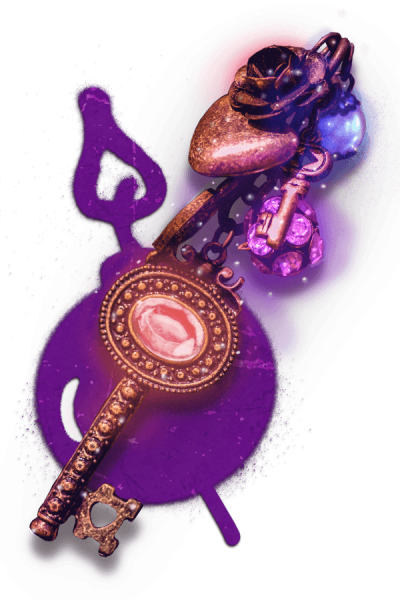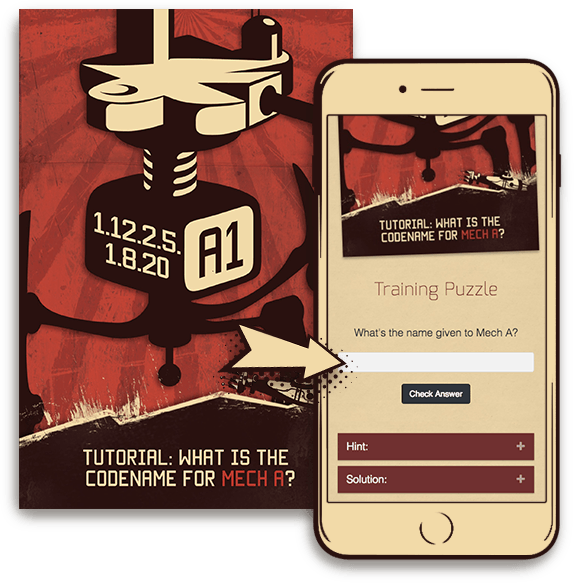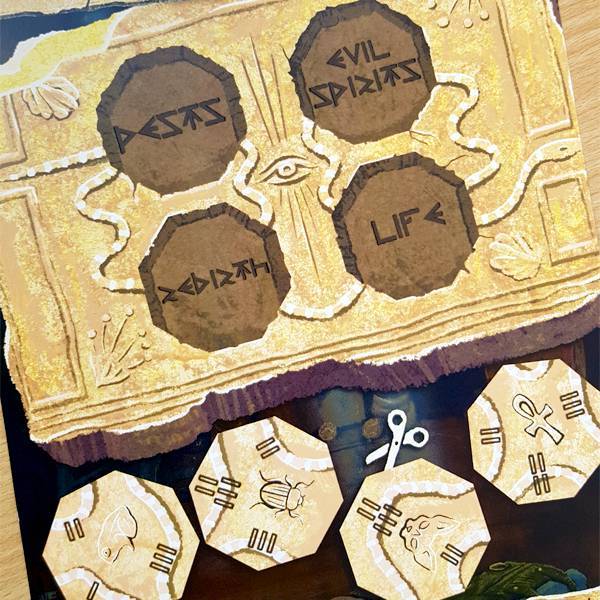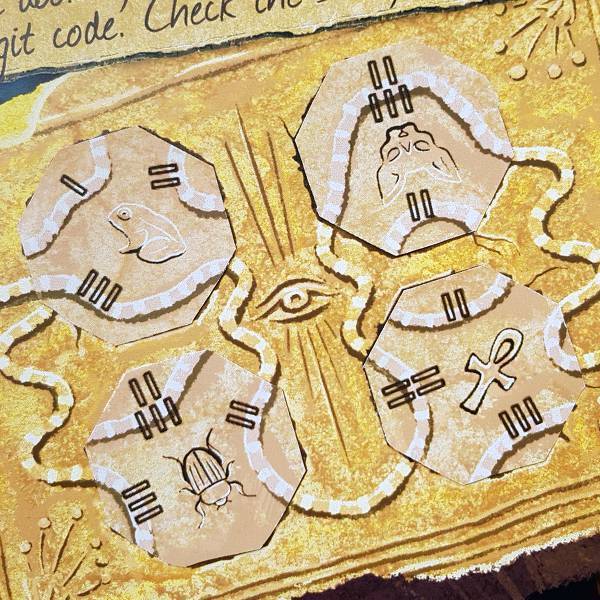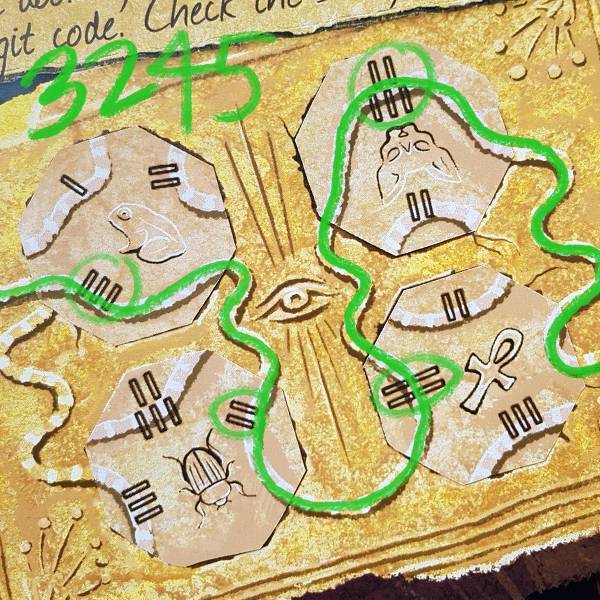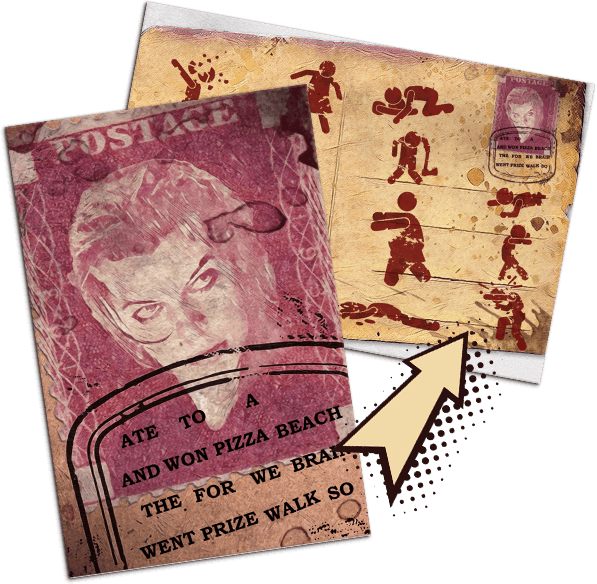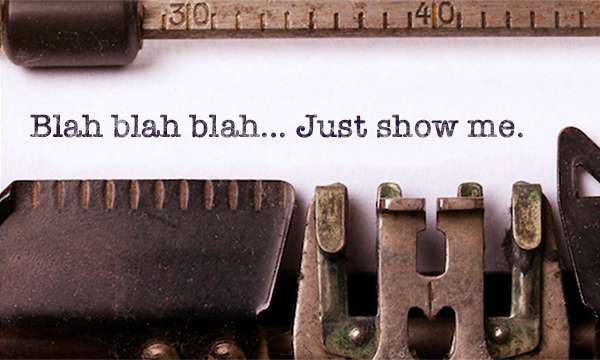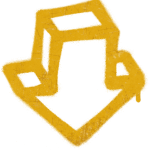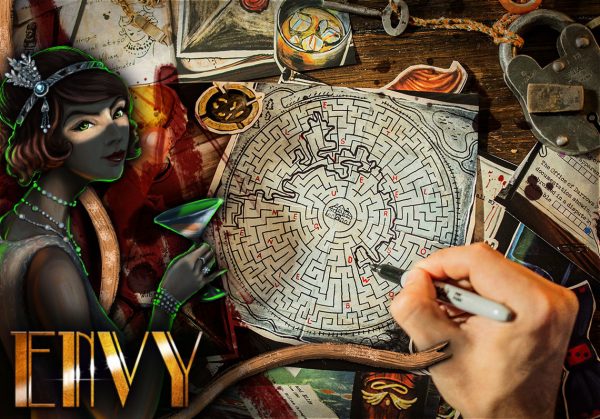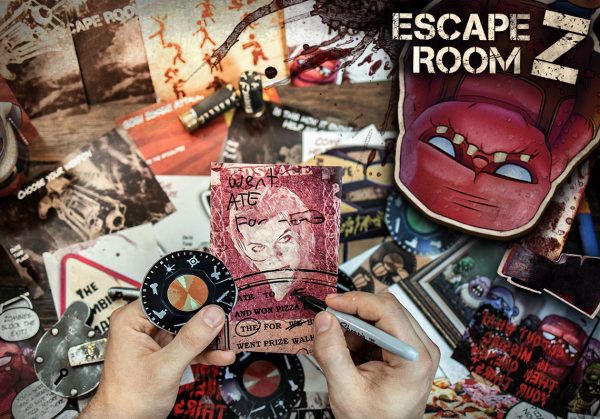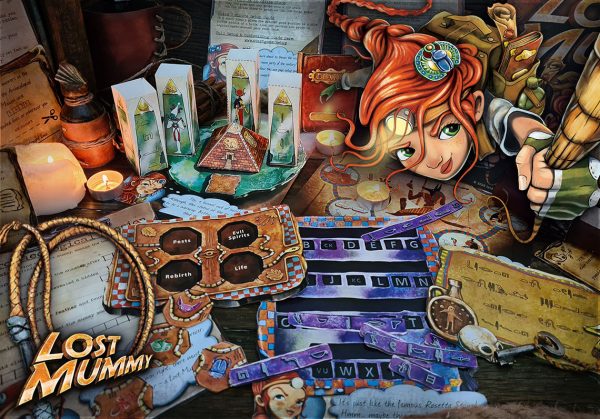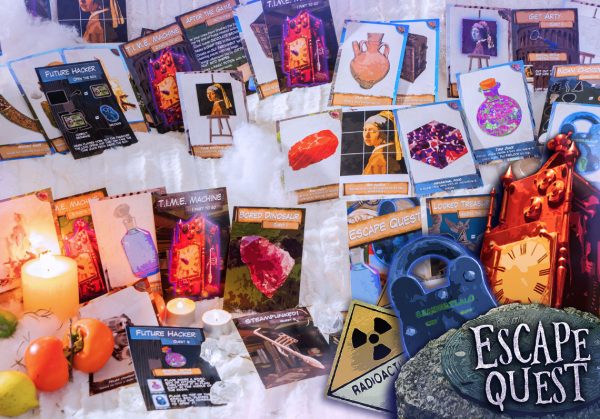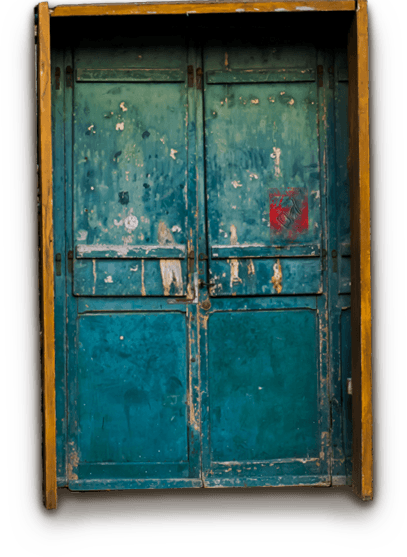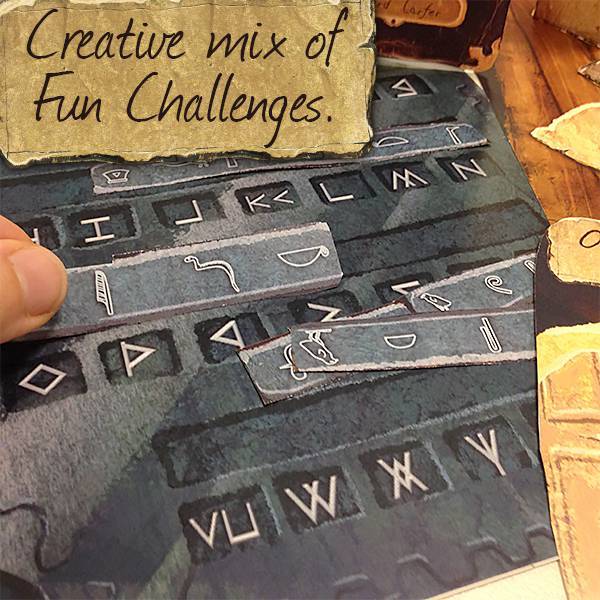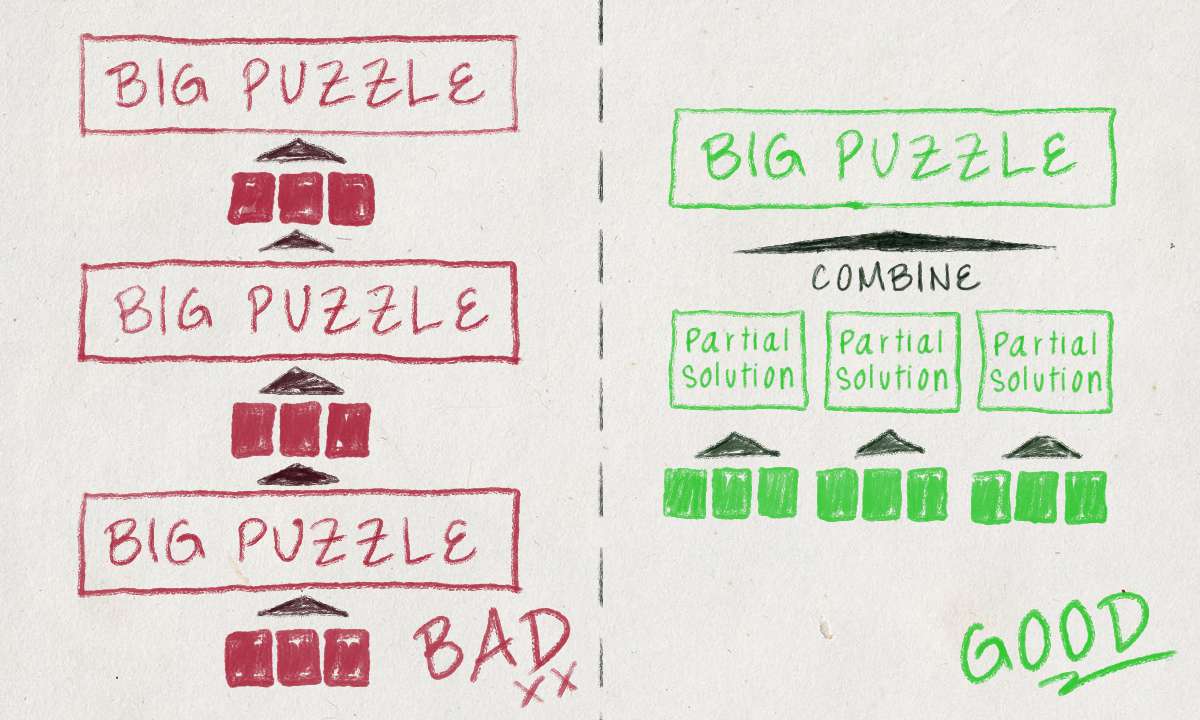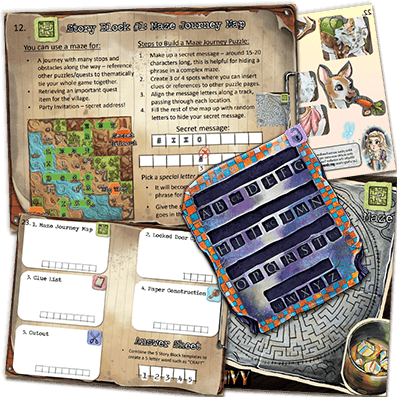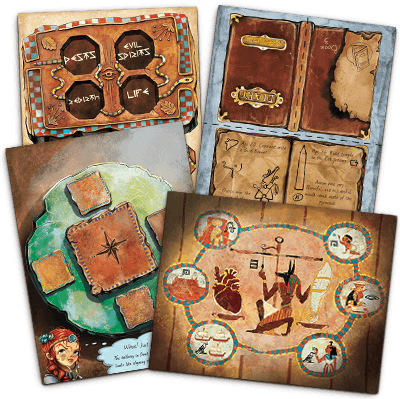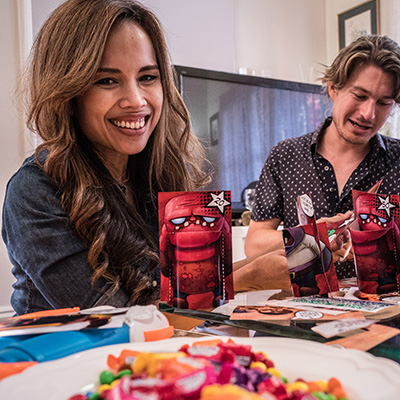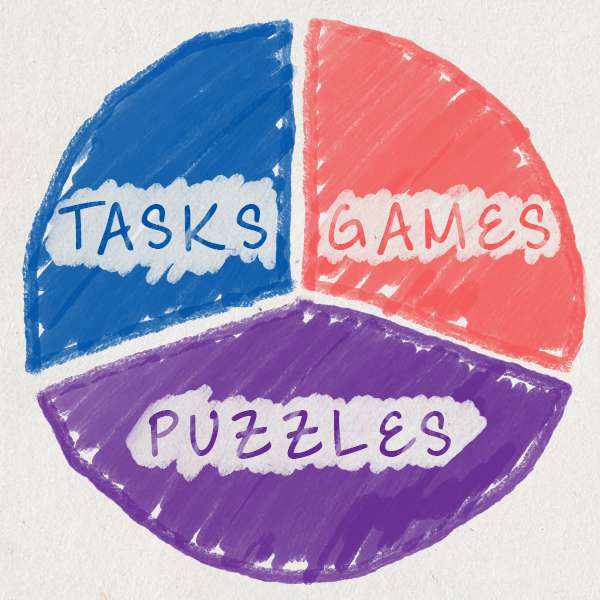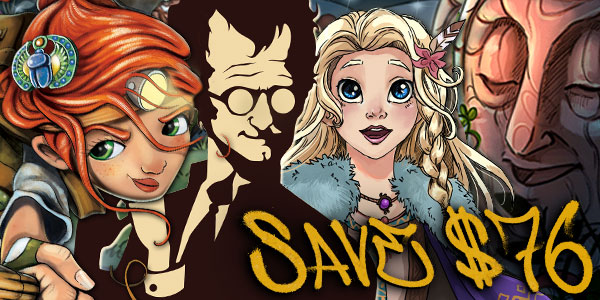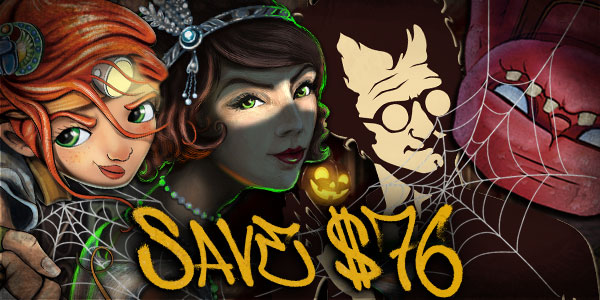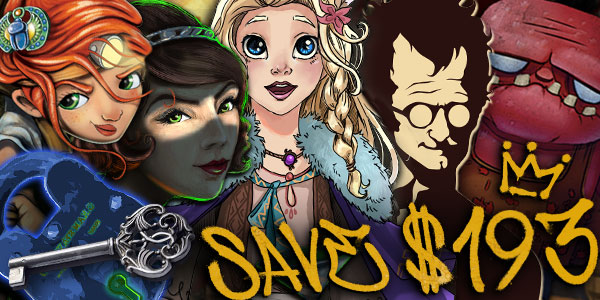Almost every DIY escape room kit on the market follows an annoying puzzle flow:
Players try solving a challenge.
They check their answers with some mechanism, like:
• Online answer box via app or website (one of my original games,
Rebel Revolt, does this).
• Physical device (slide, rotate, align...)
Turn-over
two-sided cards and check if they're correct.
• Asking the organizer, or Game Master, who is running the event (like during a team building challenge).
If they're correct, they're told to 'Go to the next part of the kit'.
This is like a road trip where you stop every 10 miles for gas. It breaks the whole experience.
Compare this to a real life escape room, when you're trying that magical 4 digit code in a padlock:
• You don't need to be told what type of answer you're trying to get.
• You don't have to 'ask' the padlock if it's the right code. You just enter it.
• You don't have to read a note instructing you to open the door and go through it. You just go through it.
Your escape room kit should aim to do this wherever possible.
This is hard. Super hard.
But absolutely worth it when crafting a best-in-class escape room box.
EN

